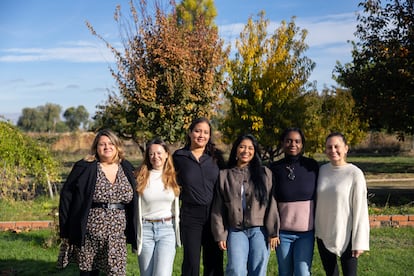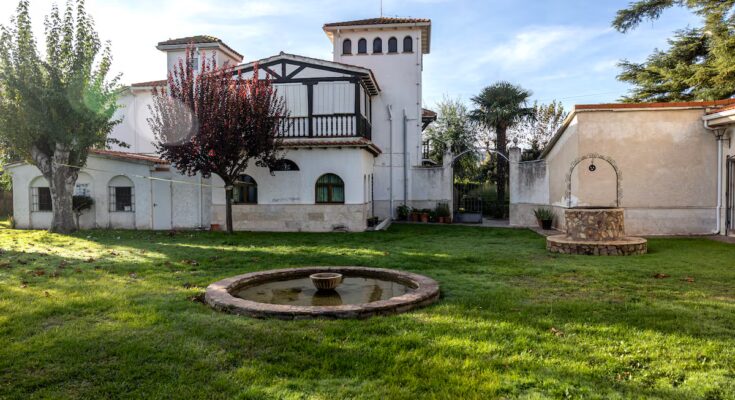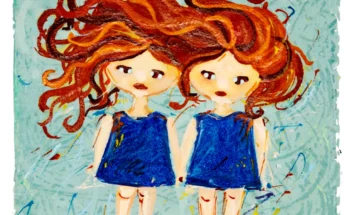In 2024, according to the latest available and still provisional data, 3,846 people committed suicide in Spain. For the breakdown by age group, we need to look for data relating to 2023, the year in which 4,116 people died by suicide, of which 5% (203) were between 12 and 24 years old and 15% (622) between 25 and 39 years old. A report released last week, Childhood, adolescence and digital well-beingand prepared by Unicef together with the Ministry for Digital Transformation, Red.es, the University of Santiago de Compostela and the Council of Faculties of Computer Engineering, provides more data on young people: 7.4% of students between 12 and 20 years old have a high risk of suicide and 6.5% have attempted to take their own lives.
In Spain, suicide has been a taboo topic for many years, the media is starting to break it and talk about it responsibly because it is a reality of society that can no longer be ignored. And the sooner it is addressed, the sooner it can be addressed.
This is how Blanca Arregui, child psychologist of the Acrescere Foundation and director of what, from Monday 17th, will be the first home in Spain for young people, between 18 and 30 years old, with suicidal behavior or who have attempted suicide, summarizes it. It can accommodate 18 to 20 people. “At Acrescere, one of our objectives is to take care of children and young people in serious and at-risk situations and protect them. Suicide, which for a long time was a taboo topic, is now a situation from which we must protect them. From the telephone of hope They told us that there are families who are very afraid when a young person or teenager attempts suicide, goes to hospital and is sent home. They think: “if we couldn’t see what was happening to them, how can we do it now knowing, furthermore, that there is a very high probability of recurrence, of having a second attempt in the first few months”. Let’s think about this and how to facilitate a transition where they feel safe. Hence the idea of Casa Maná,” he explains.
He explains that this is a pioneering project in Spain, since the only assistance available for people who have had suicidal behavior or attempted self-harm “is only hospital care”. This house, called Casa Maná, is accessed voluntarily and after an interview with two psychologists who will subsequently follow with individual and group sessions. There is a garden to take care of, therapeutic paths and manual and creative activities. For adolescents between 14 and 18 years old, there is the possibility of attending as if it were a day centre.
Suicide is, according to the World Health Organization, a public health problem. which does not depend on a single cause, but is influenced by multiple factors: social, cultural, biological, psychological and environmental. The person who commits suicide does not want to end his life, but with the suffering he suffers. A recent study published in September in Frontiers in psychiatry and titled Beyond risk: rethinking the hospitalization of suicidal subjects (Beyond risk: rethinking hospitalization of people with suicidal ideation challenges the common practice of hospitalizing people with suicidal ideation based solely on risk assessment.
He notes that this approach can be counterproductive and does not always reduce suicide mortality. “Risk predictions are unreliable: most people classified as ‘high risk’ do not commit suicide, and many suicides occur in people considered ‘low risk,'” he says. And it underlines that hospitalization can generate adverse effects, such as loss of autonomy, stigmatization and increased suffering and also deteriorate trust between patient and professional, making it difficult to continue treatment and seek future help. It suggests a paradigm shift in which we move from a model focused on risk to another based on collaboration, autonomy and community support and proposes, as alternatives to hospitalization: intensive outpatient interventions, social and family support networks or programs that give priority to hope and the meaning of life.

The latter two are, according to Jennifer Humanes, co-founder of the project, what Casa Maná seeks to offer. Humanes has been volunteering on suicide prevention issues for many years and was also spokesperson for the initiative. Let’s make a planThat called for a national suicide prevention plan.
“Right now in Spain, the healthcare available for cases of suicidal behavior is hospital-based. There is nothing that gives you the possibility of being able to heal in a non-hospital environment, in an environment surrounded by nature and where they offer you a less coercive, more humanistic approach, where they can offer you different recovery paths. This is Casa Maná,” he says. As explained, Acrescere can provide a scholarship for a young person “in a complex situation of up to 80%, so the daily cost would be around 18 euros”.
Casa Maná is located in Colmenar de Oreja, in the south of Madrid and not far from Aranjuez, in a place lost in the middle of nature, calm and silent. It is surrounded by greenery, you can hear the birds chirping. There are 30 rooms, living rooms, reading corners, dining room, kitchen. A total of 16 people will work here (11 professionals and another five so-called itinerant people). Among the professionals there are two psychologists who have the task of carrying out preventive interviews to understand the situation of each young applicant; Furthermore there are social workers and volunteers.
Verónica Fernández and Elena Rodríguez del Río are the two psychologists who will take care of the young people at home and who are carrying out the previous interviews to evaluate each one’s situation. “We evaluate, on the one hand, the risk of suicide, and on the other hand whether the person would feel comfortable at home because there may be slightly more complex cases that are beyond our resources. And we don’t want them to come here and feel bad or secluded. This project is voluntary, the idea is that it is the person themselves, not their environment, who decides on their own to come here and it is important that they know that they can leave whenever they want, as long as they tell us,” he explains. Fernandez. And his colleague Rodríguez del Río adds: “The objective of this project aimed at those who have attempted suicide is that they can come here to recover and maintain more autonomy. The idea is that they feel free and know that they will have freedom: if one day they don’t feel like participating in the therapeutic activity we have, nothing happens, they can stay and rest.”
There are also two suicide survivors in the house. “We believe that, in addition to therapy with professionals, it is of great support to have someone who has experienced the same thing as a reference he was able to get out and rebuild”, concludes Humanes.




